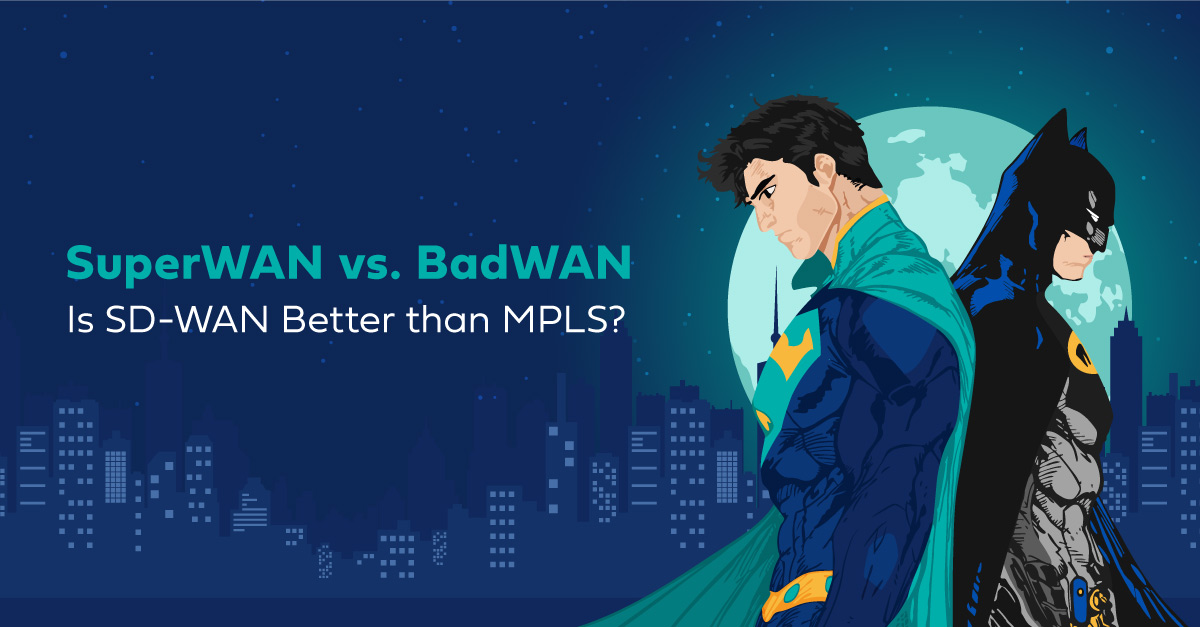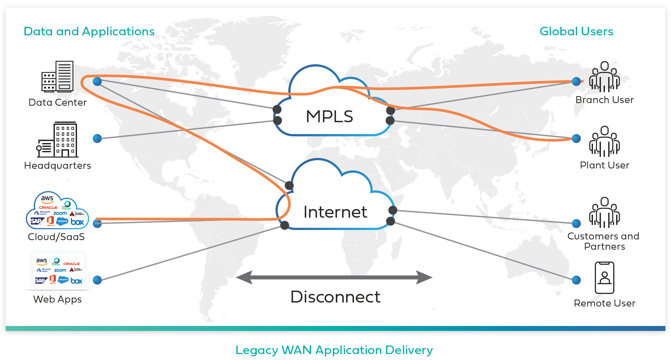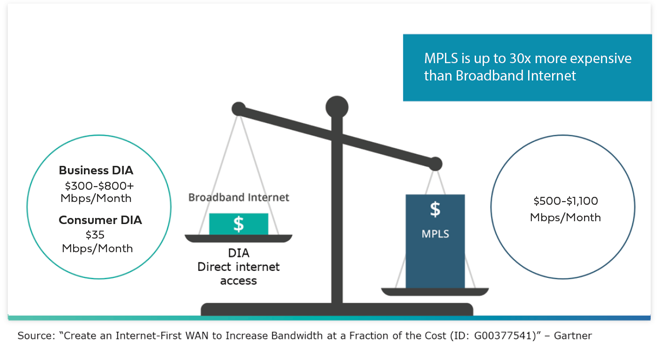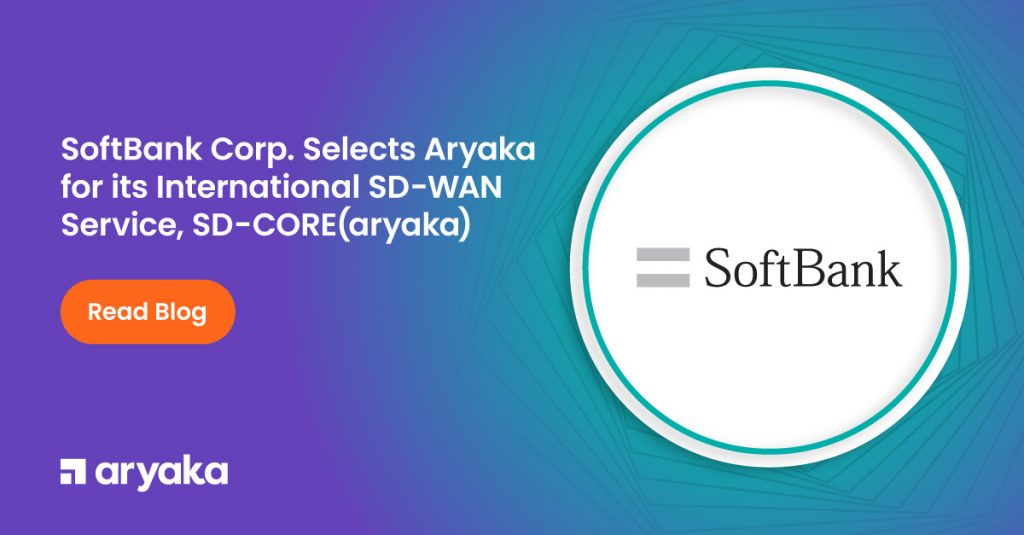SDWAN over MPLS: Is SD-WAN Better than MPLS?

There is a steep rise in the dopamine level of comic fanboys when they ponder upon the classic debate of Batman vs Superman. A perfect David vs Goliath setting. Who wins when the world’s finest are pitted against each other in an all-out brawl? Can a ninja, trained to the pinnacle of human conditioning, go toe-to-toe with an alien possessing god-like powers? Undoubtedly one of geek culture’s greatest philosophical dilemma.
Let’s park this one for a while. Network connoisseurs have a similar debate of their own. Should they put their money on SuperWAN? Or BadWAN?
Confused? Allow me to rephrase — should they put their money on Software defined wide area networking (SuperWAN) or Multiprotocol Label Switching (BadWAN). We are talking SD WAN vs MPLS. While MPLS has reigned as the go-to choice of connectivity for enterprises — things have changed over the years. Especially with the advent of cloud technology, that led to the rise of SuperWAN.
If you ask us, we will place our bets on SuperWAN. Any day, every day, and twice on Sundays.
Allow us to explain what is the difference between SD WAN and MPLS, and why is SD WAN better than MPLS.
SD-WAN vs MPLS: The Optimization Superpower
Heat vision, freeze breath, super strength, super speed and practically indestructible. With all those fancy power in Superman’s fanny pack, Batman is completely outmatched and will barely put up a fight.
So how does SD WAN differ from MPLS? Whether you are trying to dress up the MPLS network to rise to the occasion, or using internet service to supplement WAN connections, you need additional optimization tools to extract every ounce of bandwidth available across the WAN links. More so, to improve the throughput of your TCP, for delivering consistent user experience regardless of the user location.
Though MPLS bandwidth speeds has been its main USP, optimization is not native to MPLS and comes as an add-on technology. This means optimization calls for separate investment and management. Even then, it might not adequately address the performance issue, especially for international use-cases.
Aryaka’s fully-managed networking and security services, on the other hand, boasts a plethora of network optimization techniques such as compression, TCP and UDP Optimization, data de-duplication, SSL & CIFS acceleration, load balancing, path selection, packet loss recovery and error correction.
SD-WAN: Built for the Cloud
Flight abilities! Probably the most prominent difference between SD WAN and MPLS, and the most significant advantage Superman has over Batman. The latter cannot take to the clouds, and neither can MPLS.
In the past, MPLS connections have been synonymous with SLAs, Quality of Service, and stable connectivity. Multiprotocol Label Switching lifted the limitations of public internet around business-critical applications. But that was until enterprises took to the cloud. BadWAN was designed to secure point-to-point links between enterprise branch offices and data centers. Connectivity to SaaS-based applications and services came as an afterthought.
The result? It causes more problems than it is worth for the network architects who want to optimize and simplify their infrastructure. The traditional backhauling model of routing traffic dramatically increases the costs of cloud access, comes with performance penalties and kills all the benefits of optimization, irrespective of whether or not the network is layered with WAN Optimization.

SuperWAN addresses these key gaps. Not only does it connects an organization’s branches, remote locations, and data centers but also provides direct connectivity to the most widely used IaaS or SaaS providers.
SD-WAN over MPLS: Super Speed Powers
Faster than a speeding bullet! While SuperWAN facilitates bandwidth scaling, adding new branch office locations, and such chores, at the click of a button, it is not MPLS’s strong suit.
Bringing up a new site is a slow and rigid process. Getting a quote can take weeks, and setup can stretch into months. Enterprises with global locations may have to deal with multiple providers and agreements that come with rigid contract commitments and with multi-year terms.
If that was not enough, the bandwidth is expensive and hard to scale. Supporting a bandwidth-hungry ecosystem that feeds on multiple devices and SaaS applications via a high per-megabit cost model of MPLS can be a bottleneck. In fact, upon comparing MPLS vs internet, broadband internet connection is a more viable replacement to meet the bandwidth needs — from a cost and scalability standpoint.

MPLS: Helping the Road Warriors
MPLS was provisioned for static branch offices, and not for the remote workers and road warriors who map continents in search of new business opportunities. Consider the Covid world order, which pushes most (if not all) employees, universities, financial institutions and other businesses to work from home. A gap that MPLS miserably fails to fill. Even the VPN solutions that most companies are falling back on, fails to meet the sheer scale of this crisis. VPN servers are getting overloaded with the number of connections and amount of throughput required to support such a large workforce.
Aryaka’s SuperWAN offers a unique solution which can significantly improve any existing remote VPN solution deployed by the customer. It provides Aryaka’s global private network for remote users to connect to any corporate VPN server in the world. This makes the existing VPN solution easily scalable for the customers.
So What Makes SD-WAN win over MPLS?
Okay…we can go on and on about the reasons why SuperWAN wins over BadWAN, but quite sure you understand who wins the bout between MPLS network vs SD WAN. Let’s call it a day and talk more about the ingredients that go into the making of a SuperWAN.
- TCP Optimization – Offers more benefit that we can count. Packet payload sizes are bigger, packets are closer together, throughput ramps up much faster, and your first byte transfers faster. TCP Optimization is a must for any data application.
- Packet loss should be addressed using a full set of SD-WAN algorithms, not just one or two.
- Agility- Enterprises want their branch offices up and running and they want it now. The network must provide optimal agility to facilitate moves, add or change sites, and disconnect quickly.
- 24x7x365 Support
- Built-in redundancy should be delivered at all levels in the infrastructure.
- Visibility into not just in/out bandwidth, but application level usage and performance metrics and statistics.
- A single hand-to-shake model.
What you need in your SuperWAN is for it to be a managed service, which you consume instead of building yourself. Not point solutions, but a holistic approach that can accommodate rampant bandwidth growth, support digital initiatives, and let you fly business class in the cloud.
Click here to see SuperWAN in action.
To know more about what works best for your business, check out our white paper on SD-WAN vs MPLS, where we measure the pros and cons of both and discuss how a fully-managed Cloud-First WAN can be used to replace and augment existing MPLS services for enterprise connectivity, increasing business agility, while reducing WAN costs.
- Is MPLS dead? Understanding Need For mpls Network Technology
- What is MPLS network & How MPLS Works?
- 4 Reasons Why MPLS No Longer Serves Global Enterprises
- MPLS Network Pros and Cons
- SDWAN over MPLS: Is SD-WAN Better than MPLS?
- 5 Questions MPLS Providers Hope You Won’t Ask
- 3 Simple Ways for Choosing the Right MPLS Alternative
- The Slow Death of MPLS
- Can a Global SD-WAN Replace MPLS Connectivity?









